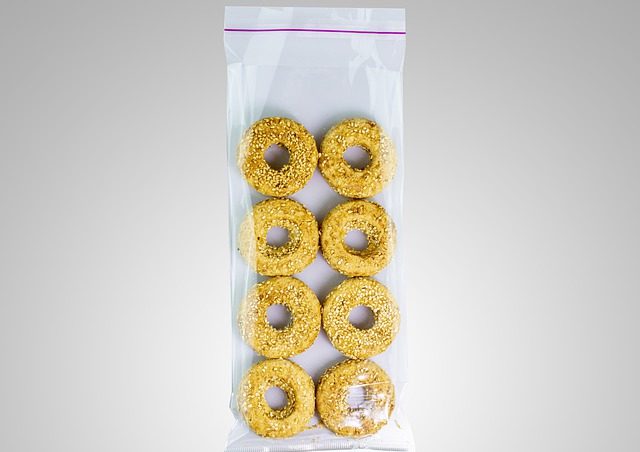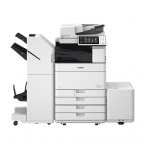
Thin-Film Technology and its Sustainable Food Package Applications
As the popularity of thin film technology continues to rise, we are seeing many more industries starting to take advantage of this impressive innovation.
One industry that is starting to experiment with thin film technology is the food industry. Mainly through investigating new, sustainable ways to package food.
In this article we’ll be taking you through what thin film technology is and how it can be applied to food packaging.
Table of Content
What is thin-film?
Thin film technology is one of the latest innovations that is started to be used in a range of industries.
Thin films are extremely thin layers of material that can be deposited onto various surfaces such as electronic parts, solar panels, and optical lenses.
This type of technology is growing in popularity as they offer a cost-effective and efficient alternative to many products. Some of the most common types of thin films include AR/HR (antireflective or high-reflectivity) coatings, TCO (transparent conductive oxide) coatings, DLC (diamond-like carbon) thin films, and Biocompatible hard coatings.
One of the newest industries that have also started to make use of the benefits that come with thin film technology is the food industry in creating sustainable food packaging applications.
Processing Method of Thin Films: How it’s made
Thin film technology is made through two primary processes: physical vapour deposition (PVD) and chemical vapour deposition (CVD).
Physical vapour deposition is one of the most common manufacturing methods of creating thin films, some of the particular methods include magnetron sputtering, pulsed laser deposition, electron beam evaporation, and thermal deposition.
Put simply, the process of deposition occurs within a vacuum chamber. Within this chamber, temperatures are raised extremely high to turn a source material from a solid into a vapour. Once its form has changed, it will then be layered onto a target material atom by atom, this is how an incredibly thin layer is able to be created.
Sustainable Food Package Applications of Thin-Film Technology
Sustainability is a big cause of concern for many industries, but especially the food packaging industry which has traditionally contributed heavily to plastic waste and global emissions.
Thin film technology has offered a sustainable alternative to traditional packaging materials and manufacturing processes that promises to revolutionize the industry to become more environmentally friendly.
Plastic packaging has been the norm for a long time for it’s ability to keep foods fresh and protected while it travels from the factory to your dinner plate. Through the use of thin film technology, packaging manufacturers are able to produce extremely thin packaging that is cost-effective, reliable, and durable.
Although thin film technology will undoubtedly improve the food packaging industry by offering a sustainable alternative to plastic, it’s not an entirely simple solution. The process of manufacturing thin films is currently very energy and resource intensive, which means that it’s not the most sustainable manufacturing process.
On top of that, it will also demand large changes in the industry to accommodate this new way of producing packaging. Machinery that is used to wrap, seal and cut materials will have to be adapted to accommodate this new process.
Common Thin Film Technologies Used Food Packaging Industry
The use of thin film technology is starting to become more widespread in the food packaging industry. Here are just a few examples of current thin film technology applications we’ve been seeing.
Compostable Thin-film Packaging Solutions
One solution to plastic waste is creating packaging that is compostable – meaning that the packaging is made out of organic material that, once disposed of, can be used to fertilize soil.
Some packaging solutions are being created using thin films made of biologically-derived molecules from materials like algae, that are a renewable.
Smart Vaccine and Medical Packaging
Transporting vaccines and medical substances has long been a difficult task as they must often be stored in very specific conditions.
With the use of thin film technology, some manufacturers have been able to create packaging solutions that keep the medical equipment at a specific temperature. This film also remains stable, even when facing extreme temperatures.
Plastic Wrap Coating in Thin Film
Thin films are being used to provide effective plastic wrap to cover fresh food items when they’re on the shelves, or being transported between the factory and it’s retailers.
The thin film wrap is able to protect food from contamination, allowing it to remain fresher for longer.
Packaging Sensors Using Thin Film
An exciting advancement in food packaging is how thin film technology is allowing manufacturers to create intelligent packaging solutions.
By using sensors, power memory and display screens, smart labels are being used to protect temperature-sensitive items.
Nanocoatings and Ultra-Thin Films
Finally, we have one of the newest advancements in thin film technology that is being applied to the food industry, Nano-coatings.
This is where thin films are made with nanocomposite properties which provide additional durability, wear resistance and other functional effects to the packaging.
Why plastic film is commonly used in food packaging?
We all know that plastic is extremely bad for the environment, so you may be wondering why it’s so commonly used in food packaging.
This is because, despite being very damaging to the environment, plastic is very effective at keep food free from contamination and other external pollutants. It acts as a protective wrap to keep your food safe so, when you come to eat it, you don’t have to worry about it being coated in bacteria or other harmful substances.
Plastic has been the traditional packaging material because of it’s effectiveness, however now many manufacturers are looking for alternative solutions – and thin films could be the perfect solution.
Final Thoughts
In this article we’ve taken you through what thin film technology is and how it is currently being applied in the food packaging industry.
It’s an exciting field and one that seems to be advancing by the day. We know that we’re looking forward to seeing what happens next in this field.


